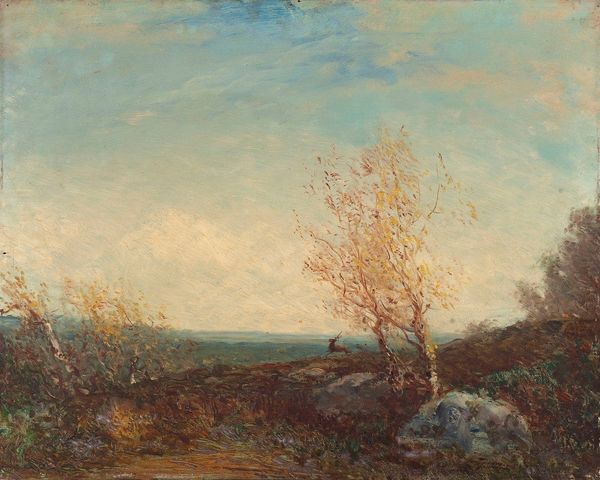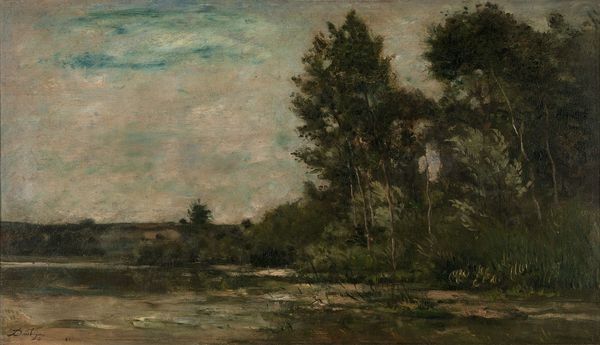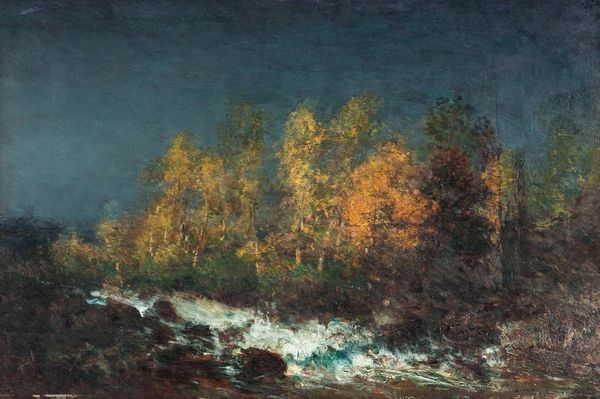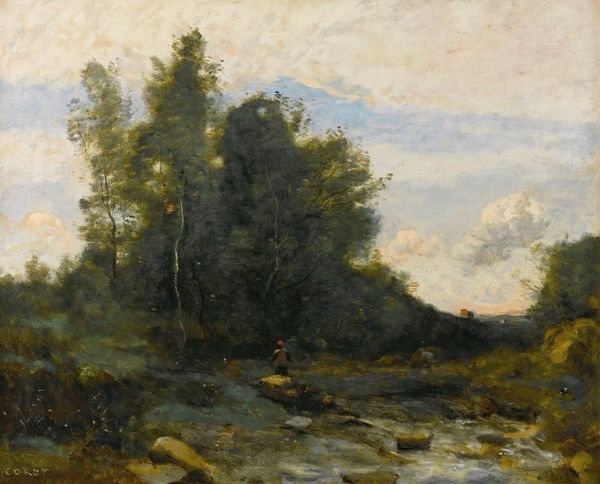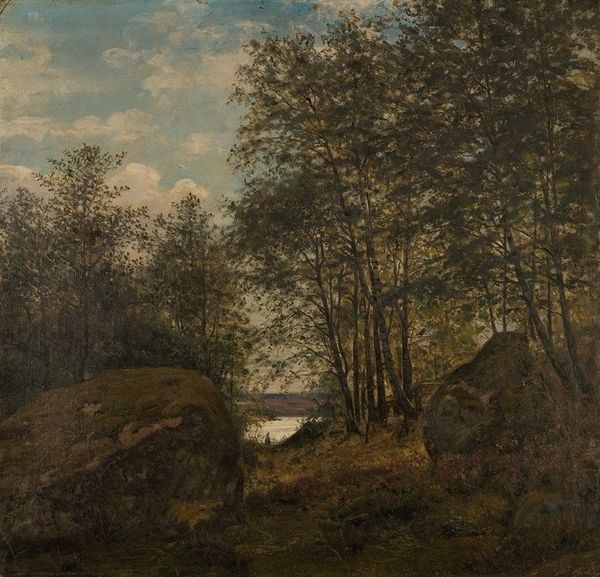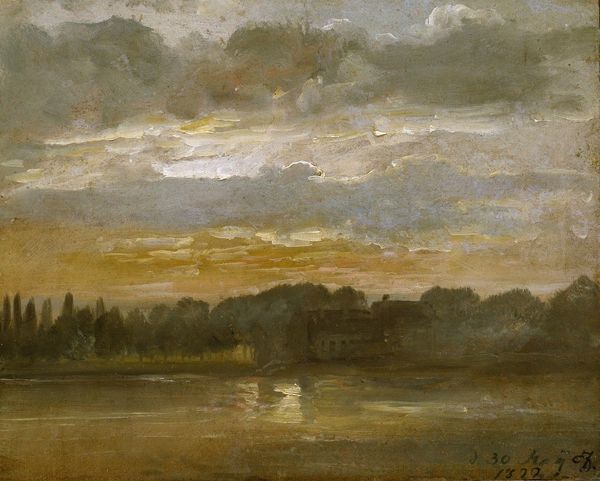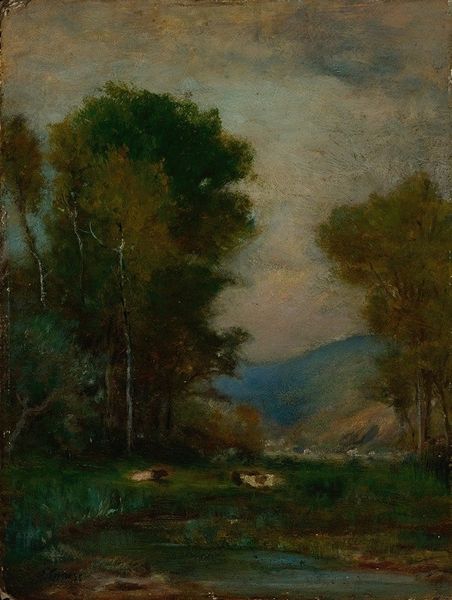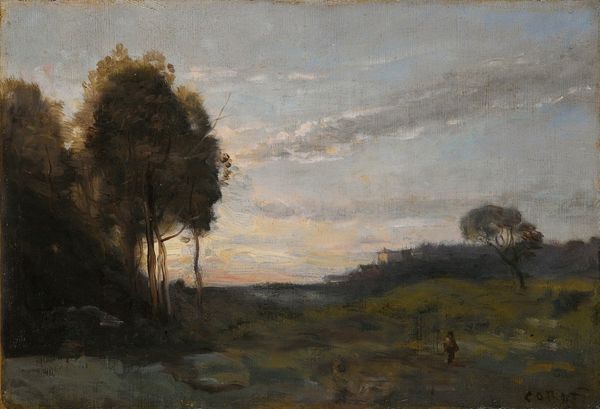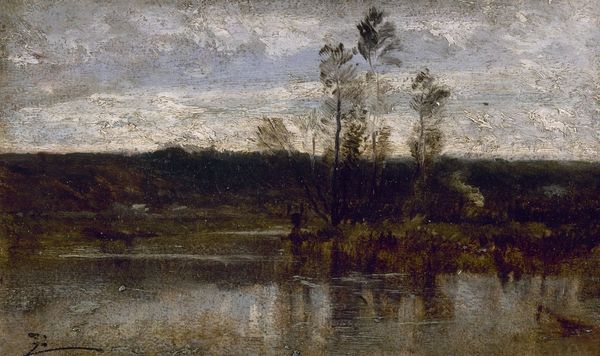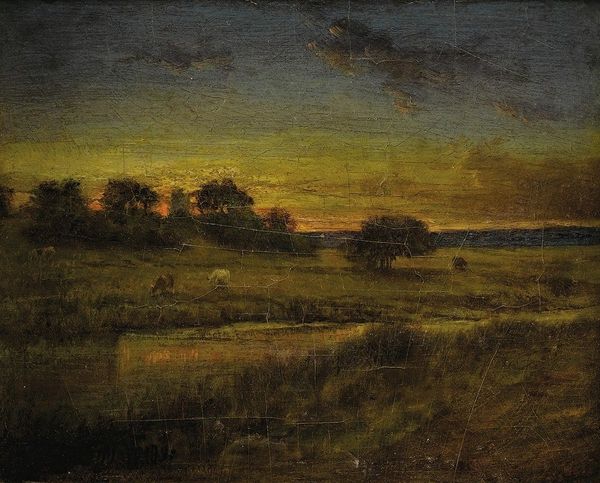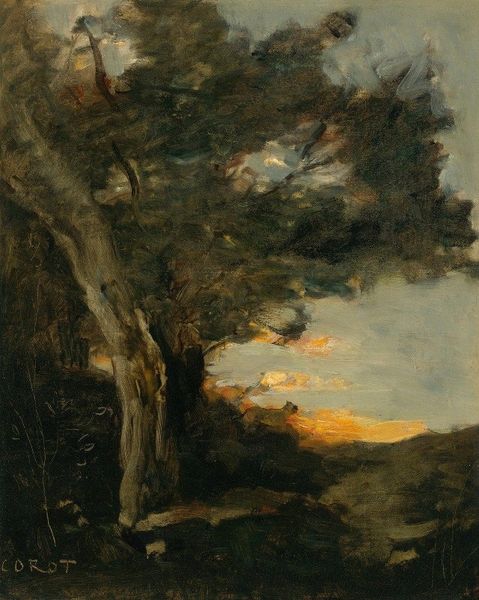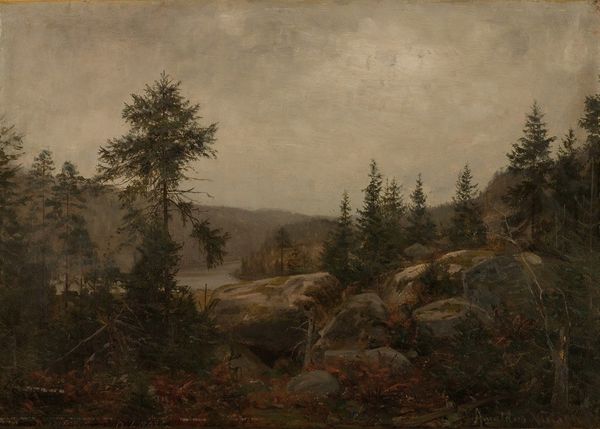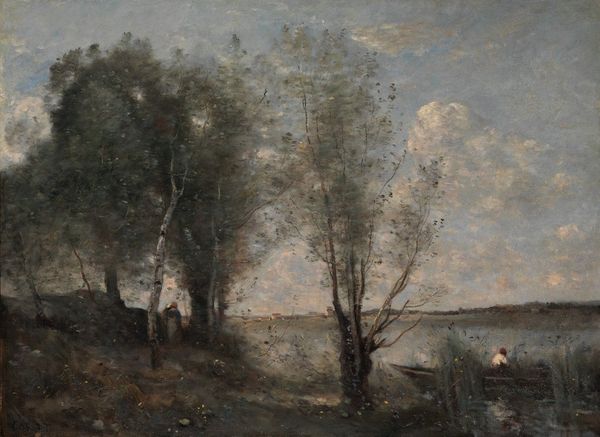
painting, oil-paint
#
animal
#
painting
#
oil-paint
#
landscape
#
realism
Copyright: Public Domain: Artvee
Curator: We are standing before Gustave Courbet's painting, "Cerf à la Mare," which translated from French, means “Stag at the Pond." It is an oil painting that exemplifies his dedication to realism and landscape art. Editor: Oh, this just *feels* like a mood. So much gray, so atmospheric, the trees practically dissolving into the sky. It feels like you could just step right into a wet forest. You know? Melancholy but beautiful. Curator: Absolutely. Courbet's work in the context of 19th-century France was often interpreted as a social and political commentary. Landscape in itself becomes a stage for exploring the natural world but it can also reflect societal anxieties and power structures. Courbet aligned himself with the Republican movement. This work has some interesting symbolic interplay of nature, realism and those broader politics that challenge bourgeois tastes, in its embrace of authenticity. Editor: Yeah, but it is so beautiful in person though. He just seems to want to render nature with almost loving attention and honest observation, like a true naturalist. The light hitting the water – such a cool touch! You get such a feeling for the dampness of the woods, you know. Did he paint on-site a lot, or just from memory? Curator: The evidence suggests a mixture of studio and plein air practices, but with a leaning towards studio refinement. There has been a lot of scholarship done which attempts to situate the animal within 19th-century narratives of exploitation and displacement under modern capitalism. But it is complex to unpack fully here. Editor: So, like, the stag is more than just a stag? Hmmm. I still think the best part is the texture. You can practically feel the roughness of the bark on those birch trees, can’t you? It really looks to capture how nature *really* is, versus how we *think* it should be. A true testament to the style of Realism in art, which seeks not to create some ideal world, but render a truth. Curator: Realism challenged existing academic conventions and the idealized subjects deemed suitable for 'high art' precisely because Courbet engages social themes alongside painterly skill in works just like this, contributing towards democratizing and diversifying what can be represented in art, and through whose perspectives art can speak. Editor: Wow, OK, that gave me even *more* to chew on than before. You're right! Now looking at this forest view and the sad looking deer – the idea of exploitation is more than present...It gives pause and time for personal introspection. Curator: Precisely. Hopefully, this brief encounter gives one ample reason to continue their personal reflections through further critical thought. Editor: Right! See? *That's* how art should leave you feeling. Boom.
Comments
No comments
Be the first to comment and join the conversation on the ultimate creative platform.
